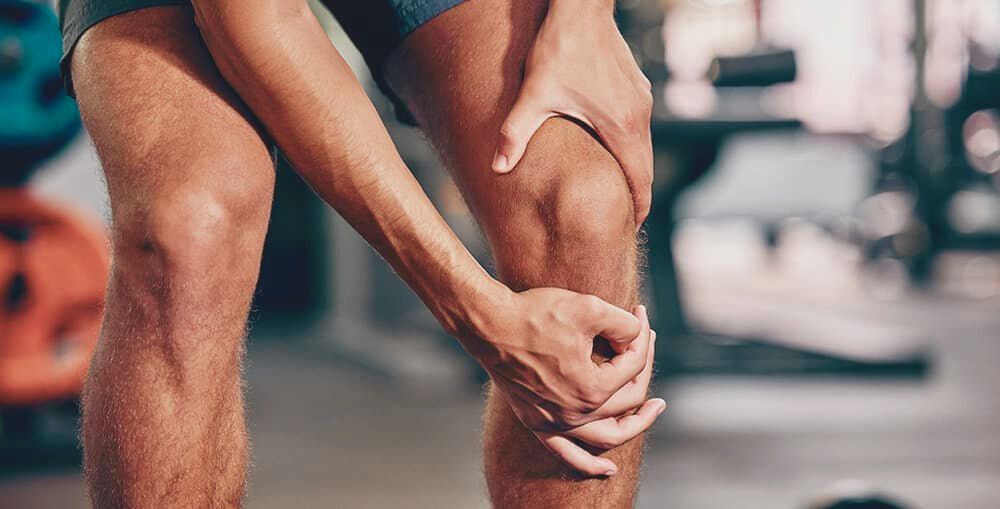Jumping on a trampoline is a fun activity that people of all ages enjoy. However, repeated bouncing can lead to muscle soreness, especially if you’re new to trampolining. Here’s an in-depth look at how trampolining engages your muscles and joints, and why you may feel sore afterwards.
The Physical Exertion of Jumping
Trampolining requires exerting force against gravity with each bounce. The act of jumping upward works your leg and core muscles as they contract to propel you up. The higher and more frequently you jump, the more strenuous the exercise becomes. This repetitive motion taxes the muscles and can result in microtears in the muscle fibers, which causes soreness.
Most of the effort comes from the push-off phase, where you engage your leg muscles to generate upward thrust. The landing phase also requires muscle activation to cushion your touchdown and stabilize your body. With each jump, your muscles are rapidly contracting and lengthening in what’s known as a plyometric or stretch-shortening cycle. This eccentric then concentric motion is part of what contributes to muscle fatigue.
Primary Muscle Groups Worked
The main muscles engaged during trampolining include:
- Quadriceps: Straighten the knee to provide jumping power.
- Hamstrings: Bend the knee for the landing; aid in propulsion.
- Calves: Lift the heels and control the foot during push-off.
- Glutes: Provide thrust by extending the hips.
- Abdominals: Stabilize the spine and trunk throughout the motion.
- Shoulder and back muscles: Maintain proper upright posture against gravity.
As these large muscle groups of the hips, thighs, and core contract forcefully and repeatedly, they are put under considerable stress. This can provoke soreness, especially in the quadriceps and hamstrings which play a dominant role.
Importance of Good Form
Using proper technique while trampolining can help minimize the unnecessary strain that leads to next-day soreness. Maintaining correct posture and balance engages your muscles more efficiently. Land with bent knees to better absorb impact, and avoid bouncing too high until your body adapts. Proper form also reduces the risk of injury that could cause pain.
Additionally, don’t grip the handlebar too tightly. This can create tension in the shoulders and upper body when it should be your legs and core doing the work. Relax the upper body while keeping your abdominals engaged. Let your muscles work synergistically for optimal jumping biomechanics.
Impact on Joints
The constant impact from high-intensity bouncing puts stress not just on muscles, but also on joints. This is particularly true for the knees and ankles which absorb much of the landing force. Excessive, improper jumping can inflame these joints and surrounding tendons, potentially leading to overuse injuries.
Listen to warning signs from your knees, especially pain around or behind the kneecap. Ease up on bounce height and frequency if you feel discomfort. Strengthening your leg muscles helps better support your knees during this motion. Ankle soreness may indicate insufficient rebound control; focus on smooth landings with bent knees and flat feet.

Soreness Management Tips
Here are some suggestions to help manage muscle soreness after trampolining:
- Start with low, gentle bouncing to allow your body to adapt before increasing height.
- Warm up muscles beforehand with light cardio and stretches.
- Cool down afterward and stretch major muscle groups.
- Use an ice pack on sore muscles for 15-20 minutes.
- Take anti-inflammatory medication as needed for pain relief.
- Get a massage to help muscles recover.
- Stay hydrated before, during, and after bouncing.
- Allow for rest days between trampoline sessions, especially when starting out.
The takeaway is that while trampolining is fun, overdoing it can definitely make you sore, especially as a beginner. Listen to your body, use proper form, warm up and cool down, and build up jumping intensity gradually. With caution and moderation, you can reap the benefits of trampolining while avoiding excessive muscle fatigue and pain.
Injury Risks and Prevention
While sore muscles are common with trampolining, more serious injuries are also possible if proper precautions aren’t taken. Some risks include:
Sprains and Fractures
Landing improperly can sprain ankles or wrists. Attempting risky flips and twists could result in fractures if you land wrong. Use a trampoline designed for recreational exercise, not elaborate tricks.
Falls
Bouncing too high or losing control raises the hazard of falling off the trampoline onto the ground. Always have adequate overhead clearance and use protective enclosure netting.
Chronic Joint Pain
Overstressing the knee, ankle, and hip joints through excessive use can lead to inflammatory conditions like patellofemoral pain syndrome or Achilles tendonitis. Avoid bouncing for more than 20 minutes at a time as a beginner.
Neck Injury
Attempting somersaults or flips can strain the cervical vertebrae. Build up slowly to advanced skills under proper supervision. Keep your head aligned with your torso when jumping.
These dangers reinforce the importance of warming up, using proper form, not overexerting yourself, and having well-made protective equipment. Consult a doctor if you have existing joint or musculoskeletal issues. With sound judgment and preparation, trampolining can be safe as well as fun.
Soreness vs. Muscle Fatigue
Post-workout soreness differs from the muscle fatigue you may experience during or right after exercise. Fatigue is the temporary tiredness and loss of power that sets in as muscles run low on energy during sustained activity. Soreness comes later, peaking 24-48 hours afterward, as your body works to repair minor damage to muscle fibers.
Moderate fatigue and muscle burn during trampolining is normal and often desired, as it indicates productive training. But excessive fatigue that causes form breakdown or discomfort means you should slow down or take a break. Soreness the next day or two ensures your muscles adapt to become stronger. Too much soreness may signal poor technique or overtraining which could hinder progress.
Fitness Benefits
Despite potential soreness, regularly using a trampoline provides excellent cardiovascular, muscle-strengthening, and coordination benefits. The metabolic boost from sustained jumping improves stamina and calorie burn. Repeated muscle contractions build lower body strength and power. Maintaining balance and control develops core stability and proprioception.
With a measured approach, trampolining can complement an overall fitness regimen without being detrimental. Start with easier intervals before progressing with duration and intensity. Refuel and allow sore muscles adequate rest between sessions. Consistency is key for improved fitness that eventually reduces excessive post-exercise soreness.
Intensity and Duration Factors
Your exertion level and time spent jumping greatly influence how sore you’ll feel afterward. High, frequent bounces provide an intense muscle workout. But an excessive number of maximal jumps can cause excessive microtears and inflammation. Beginners may only manage a few minutes of moderate bouncing before muscle fatigue sets in.
Pace yourself according to your fitness level. Take breaks doing light hops or simple bounces to lower intensity. Increase the duration gradually over weeks to condition your stamina and muscles. Listen to your body and end your session once excessive fatigue compromises form and enjoyment. Adapting tissue tolerance limits soreness from overexertion.
Individual Factors Affecting Soreness
Along with trampolining intensity and duration, individual differences can impact post-exercise soreness:
- Age – Children tend to bounce back quicker due to resilient muscles and joints. Soreness intensifies with age as tissues become less elastic.
- Fitness Level – Well-conditioned muscles adapt more easily to new stresses. Detrained muscles suffer more microtrauma and soreness.
- Weight – Heavier jumpers exert greater force on muscles and joints, increasing soreness potential.
- Experience – Trampolining rookies incur more unaccustomed muscle usage and delayed onset muscle soreness.
The more high-impact exercise your body is used to, the less trampolining disrupts your homeostasis to provoke debilitating soreness. Allow time for your fitness level to catch up to the new trampoline-imposed demands.

Common Soreness Symptoms
Some common soreness symptoms are listed below:
Muscle Soreness
- Dull, achy pain in exercised muscles
- Stiffness and decreased range of motion
- Muscle weakness and shakiness
- Tender muscles to touch or contraction
- Delayed onset 24-48 hours after exercise
Joint Soreness
- Pain or tenderness in knees, ankles, wrists
- Joint stiffness, swelling or instability
- Decreased mobility and flexibility
- Discomfort when bearing weight or impact
Safety and Precautions
- Use a well-constructed trampoline designed for exercise
- Do not attempt flips, twists or risky maneuvers as a beginner
- Increase jump height and intensity gradually over multiple sessions
- Jump for no longer than 20 consecutive minutes as a beginner
- Land with bent knees and maintain proper alignment
- Have spotters and/or enclosure netting for protection
- Stop the activity if you feel a sharp pain in muscles, joints or tendons
Minimizing Soreness
- Warm up muscles thoroughly before bouncing
- Hydrate well before, during and after trampolining
- Wear proper footwear with shock-absorbing soles
- Use mini-trampolines to reduce impact if needed
- Stretch major muscle groups after bouncing
- Apply heat or cold therapy to sore areas
- Use massage, compression or EMS to aid muscle recovery
- Allow ample rest between trampoline sessions
- Adjust intensity and duration based on your fitness level
Warning Signs to Look For
- Joint instability, popping or grinding
- Localized swelling around joints
- Muscle cramping or spasms during activity
- Sharp, shooting joint or muscle pain
- Severe muscle stiffness or decreased flexibility
- Persistent soreness longer than 48 hours after exercise
Conclusion
Trampolining is a high-impact activity that can lead to muscle soreness, especially in beginners. Overworking muscle groups causes micro-tears and inflammation. Proper precautions, pacing, and post-exercise care can minimize overuse soreness.
Allow time for your body to adapt to the demands of trampolining. With a little patience and preparation, you can avoid debilitating pain and maximize the many health and fitness benefits bouncing provides.
Frequently Asked Question
Why is my whole body sore after going to a trampoline park?
It’s common to feel sore after jumping at a trampoline park because it engages muscles you might not use regularly. The repetitive bouncing and landing put strain on various muscle groups, causing soreness. This soreness is often a sign that your muscles are getting a workout. Make sure to warm up before jumping and stretch afterward to help reduce soreness and prevent injuries.
How long does muscle soreness last?
Muscle soreness duration varies, typically lasting 24 to 72 hours post-exercise. This discomfort, known as Delayed Onset Muscle Soreness (DOMS), arises from microscopic damage during strenuous activities. Adequate rest, hydration, and gentle stretching can ease symptoms. If soreness persists beyond a few days or intensifies, consulting a healthcare professional is advisable.
What happens to your body when you jump on a trampoline?
Jumping on a trampoline engages muscles throughout your body, including legs, core, and arms, providing a full-body workout. It also improves cardiovascular health and balance. Repeated bouncing enhances bone density and strengthens joints. The lymphatic system gets a boost, aiding in detoxification. Plus, it’s a fun way to burn calories and release endorphins, promoting a sense of well-being.
Last Updated on February 13, 2024

